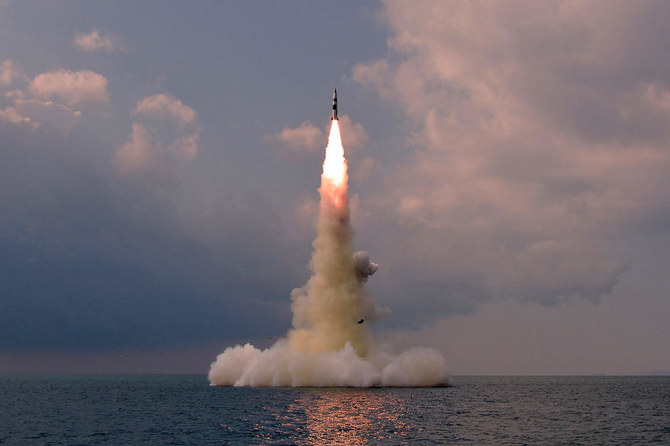SEOUL: North Korea conducted what is thought to be its largest intercontinental ballistic missile (ICBM) test ever on Thursday, militaries in South Korea and Japan said, marking a dramatic end to a self-imposed moratorium on long-range testing.
It would be the first full-capability launch of the nuclear-armed state’s largest missiles since 2017, and represents a major step in the North’s development of weapons that might be able to deliver nuclear warheads anywhere in the United States.
The US condemns North Korea’s latest missile launch, the Indo-Pacific Command (INDOPACOM) said in a statement on Thursday.
INDOPACOM said the launch did not pose an immediate threat to US territory or personnel, or its allies, but called on North Korea to refrain from further destabilizing acts.
Prime Minister Fumio Kishida also condemned North Korea’s launch of a suspected intercontinental ballistic missile that landed in his country’s exclusive economic zone as an “outrageous, unforgivable” act.
North Korea was threatening “the peace and safety of Japan, the region and the international community,” Kishida said in Brussels where he will meet with members of the Group of Seven later on Thursday. “This cannot be accepted.”
The North’s return to major weapons tests also poses a new national security headache for US President Joe Biden as he responds to Russia’s invasion of Ukraine, and presents a challenge to South Korea’s incoming conservative administration.
Japanese authorities said the launch appeared to be a “new type” of ICBM that flew for about 71 minutes to an altitude of about 6,000km and a range of 1,100km from its launch site.
It landed inside Japan’s exclusive economic zone (EEZ), 170km west of the northern prefecture of Aomori, at 3:44 p.m. (0644 GMT), the coast guard said.
South Korea’s Joint Chiefs of Staff put the missile’s maximum altitude at 6,200km and its range at 1,080km.
That is further and longer than North Korea’s last ICBM test in 2017, when it launched a Hwasong-15 missile that flew for 53 minutes to an altitude of about 4,475km and range of 950km.
Thursday’s ICBM launch prompted South Korea to test fire a volley of its own, smaller ballistic and air-to-ground missiles to demonstrate it has the “capability and readiness” to precisely strike missile launch sites, command and support facilities, and other targets in North Korea if necessary, South Korea’s Joint Chiefs of Staff said in a statement.
South Korean deputy national security adviser Suh Choo-suk condemned the launch as “a clear violation of UN Security Council resolutions, and a reversal of the moratorium on ICBM launches, which North Korea had promised to the international community.”
South Korea’s JCS said the latest missile was launched from near Sunan, where Pyongyang’s international airport is located. On March 16, North Korea launched a suspected missile from that airport that appeared to explode shortly after liftoff, South Korea’s military said.














